- About me
- Publications
- Ren. in El. Markets
- Module 1 – Fundamentals of electricity markets
- Module 2 – Electricity spot markets (e.g., day-ahead)
- Module 3 – Intra-day and balancing markets
- Module 4 – Ancillary services
- Module 5 – Impact of renewables on electricity markets
- Module 6 – Participation of renewables in electricity markets
- Module 7 – Introduction to renewable energy analytics
- Module 8 – Verification of renewable energy forecasts
- Module 9 – Renewable energy forecasting – First steps
- Module 10 – Renewable energy forecasting – Advanced topics
- Additional industry interviews
- Interviews with former students
- Exercises
- Int. J. Forecasting
- Contact
- Download CV
2025
Publication Types:

Value-oriented forecast reconciliation for renewables in electricity markets
Forecast reconciliation is considered an effective method for achieving coherence and improving forecast accuracy. However, the value of reconciled forecasts in downstream decision-making tasks has been mostly overlooked. In a multi-agent setup with heterogeneous loss functions, this oversight may lead to unfair outcomes, hence resulting in conflicts during the reconciliation process. To address this, we propose a value-oriented forecast reconciliation approach that focuses on the forecast value for individual agents. Fairness is ensured through the use of a Nash bargaining framework. Specifically, we model this problem as a cooperative bargaining game, where each agent aims to optimize their own gain while contributing to the overall reconciliation process. We then present a primal-dual algorithm for parameter estimation based on empirical risk minimization. From an application perspective, we consider an aggregated wind energy trading problem, where profits are distributed using a weighted allocation rule. We demonstrate the effectiveness of our approach through several numerical experiments, showing that it consistently results in increased profits for all agents involved

Despite widespread adoption of machine learning, many firms face the common challenge of relevant datasets being distributed amongst market competitors whom are reluctant to share information. Accordingly, recent works propose analytics markets as a way to provide monetary incentives for collaboration, where agents share features and are rewarded based on their contribution to improving the predictions of others. These contributions are determined by their relative Shapley value, computed by treating features as players and their interactions as a cooperative game. However, this setup is known to incite agents to strategically replicate their data and act under multiple false identities to increase their own revenue whilst diminishing that of others, which limits the viability of these markets in practice.
In this work, we develop an analytics market robust to such strategic replication for supervised learning problems. We adopt Pearl’s do-calculus from causal inference to refine the cooperative game by differentiating between observational and interventional conditional probabilities. As a result, we derive Shapley value-based rewards that deter replication by design.
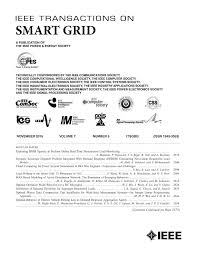
Seamless and multi-resolution energy forecasting
Forecasting is pivotal in energy systems, by providing fundamentals for operation at different horizons and resolutions. Though energy forecasting has been widely studied for capturing temporal information, very few works concentrate on the frequency information provided by forecasts. They are consequently often limited to single-resolution applications (e.g., hourly). Here, we propose a unified energy forecasting framework based on Laplace transform in the multi-resolution context. The forecasts can be seamlessly produced at different desired resolutions without re-training or post-processing. Case studies on both energy demand and supply data show that the forecasts from our proposed method can provide accurate information in both time and frequency domains. Across the resolutions, the forecasts also demonstrate high consistency. More importantly, we explore the operational effects of our produced forecasts in the day-ahead and intra-day energy scheduling. The relationship between (i) errors in both time and frequency domains and (ii) operational value of the forecasts is analysed. Significant operational benefits are obtained.
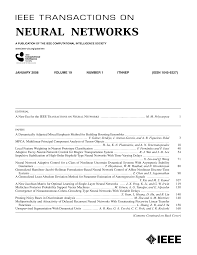
Privacy-aware data acquisition under data similarity in regression markets
2025ArticleIn press/Available onlineJournal paper
IEEE Transactions on Neural Networks and Learning Systems
Publication year: 2025
Data markets facilitate decentralized data exchange for applications such as prediction, learning, or inference. The design of these markets is challenged by varying privacy preferences as well as data similarity among data owners. Related works have often overlooked how data similarity impacts pricing and data value through statistical information leakage. We demonstrate that data similarity and privacy preferences are integral to market design and propose a query-response protocol using local differential privacy for a two-party data acquisition mechanism. In our regression data market model, we analyze strategic interactions between privacy-aware owners and the learner as a Stackelberg game over the asked price and privacy factor. Finally, we numerically evaluate how data similarity affects market participation and traded data value.

The growing uncertainty from renewable power and electricity demand brings significant challenges to unit commitment (UC). While various advanced forecasting and optimization methods have been developed to predict better and address this uncertainty, most previous studies treat forecasting and optimization as separate tasks. This separation can lead to suboptimal results due to misalignment between the objectives of the two tasks. To overcome this challenge, we propose a robust UC framework that integrates the forecasting and optimization processes while ensuring statistical guarantees. In the forecasting stage, we combine multiple predictions derived from diverse data sources and methodologies for an improved prediction, aiming to optimize the UC performance. In the optimization stage, the combined prediction is used to construct an uncertainty set with statistical guarantees, based on which the robust UC model is formulated. The optimal robust UC solution provides feedback to refine the forecasting process, forming a closed loop. To solve the proposed integrated forecasting-optimization framework efficiently and effectively, we develop a neural network-based surrogate model for acceleration and introduce a reshaping method for the uncertainty set based on the optimization result to reduce conservativeness. Case studies on modified IEEE 30-bus and 118-bus systems demonstrate the advantages of the proposed approach.

Energy management costs can be reduced by increasing load forecasting accuracy. Many studies use multiple data sources to potentially yield improved forecasts. However, data owners may be hesitant to share their data due to privacy concerns and a lack of monetary incentives. Here, we establish a model trading market to encourage collaboration, in which a buyer can purchase advanced load forecasting models that have been trained by sellers’ data to facilitate his decision-making. Specifically, we first propose a cost-oriented loss function that links to the buyer’s decision-making problem, which serves as a basis for market participants to evaluate the model quality and design their utility functions. Then, an iterative model auction mechanism is proposed to orchestrate selfish market participants to reach a consensus on the social welfare-maximizing solution, where the model quality and price for trading are determined through a distributed process. Furthermore, we propose a model adaptation strategy, including model fine-tuning and ensembling, for the buyer to enhance the applicability of purchased models to his decision-making problem. Experiments for building energy management are conducted based on public datasets. Results show that our approach converges to the socially optimal point and every participant can benefit from the market: sellers are compensated for providing models; and, the buyer can greatly reduce operational costs by employing the purchased models.

Integrated optimization of operations and capacity planning under uncertainty for drayage procurement in container logistics
We present an integrated framework for truckload procurement in container logistics, bridging strategic and operational aspects that are often treated independently in existing research. Drayage, the short-haul trucking of containers, plays a critical role in intermodal container logistics. Using dynamic programming, we identify optimal operational policies for allocating drayage volumes among capacitated carriers under uncertain container flows and spot rates. The computational complexity of optimization under uncertainty is mitigated through sample average approximation. These optimal policies serve as the basis for evaluating specific capacity arrangements. To optimize capacity reservations with strategic and spot carriers, we employ an efficient quasiNewton method. Numerical experiments demonstrate significant cost-efficiency improvements, including a 21.2% cost reduction in a four-period scenario. Monte Carlo simulations further highlight the strong generalization capabilities of the proposed joint optimization method across out-of-sample scenarios. These findings underscore the importance of integrating strategic and operational decisions to enhance cost efficiency in truckload procurement under uncertainty.

How long is long enough? Finite-horizon approximation of energy storage scheduling problems
Energy storage scheduling problems, where a storage is operated to maximize its profit in response to a price signal, are essentially infinite-horizon optimization problems as storage systems operate continuously, without a foreseen end to their operation. Such problems can be solved to optimality with a rolling-horizon approach, provided that the planning horizon over which the problem is solved is long enough. Such a horizon is termed a forecast horizon. However, the length of the planning horizon is usually chosen arbitrarily for such applications. We introduce an easy-to-check condition that confirms whether a planning horizon is a forecast horizon, and which can be used to derive a bound on suboptimality when it is not the case. By way of an example, we demonstrate that the existence of forecast horizons is not guaranteed for this problem. We also derive a lower bound on the length of the minimum forecast horizon. We show how the condition introduced can be used as part of an algorithm to determine the minimum forecast horizon of the problem, which ensures the determination of optimal solutions at the lowest computational and forecasting costs. Finally, we provide insights into the implications of different planning horizons for a range of storage system characteristics.

Generalizable simulation framework for the request-to-order process in the procurement of onboard vessel requisitions
Procurement in maritime logistics faces challenges due to uncertainties in demand and fluctuating market conditions. To address these complexities, we introduce a flexible discrete-event simulation framework that models the request-to-order process. This framework captures critical stages, including the generation of onboard vessel requisitions, requisition handling, and order allocation. Through numerical analysis, we compare two order allocation policies: a naive practice, which relies heavily on contracts, and a dynamic supplier selection approach that explores cost opportunities in the spot market. Our findings reveal trade-offs between cost efficiency and contract compliance, particularly in meeting volume commitments to contracted suppliers. Excessive reliance on spot market opportunities can yield significant savings but at the expense of contract compliance. Additionally, when spot rates are highly sensitive to order quantities, both policies tend to overutilize contracts, highlighting the need for larger volume commitments in such cases. These results offer actionable insights for improving procurement practices, while the framework’s adaptability makes it a powerful decision-support tool across diverse procurement contexts.
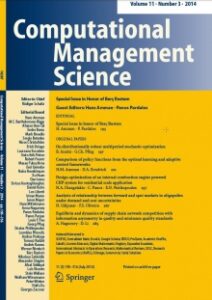
Fairness by design in shared-energy allocation problems
2025ArticleIn press/Available onlineJournal paper
Computational Management Science, in press/available online
Publication year: 2025
This paper studies how to aggregate prosumers (or large consumers) and their collective decisions in electricity markets, with a focus on fairness. Fairness is essential for prosumers to participate in aggregation schemes. Some prosumers may not be able to access the energy market directly, even though it would be beneficial for them. Therefore, new companies offer to aggregate them and promise to treat them fairly. This leads to a fair resource allocation problem.
We propose to use acceptability constraints to guarantee that each prosumer gains from the aggregation.
Moreover, we aim to distribute the costs and benefits fairly, taking into account the multi-period and uncertain nature of the problem. Rather than using financial mechanisms to adjust for fairness issues, we focus on various objectives and constraints, within decision problems, that achieve fairness by design. We start from a simple single-period and deterministic model, and then generalize it to a dynamic and stochastic setting using, e.g., stochastic dominance constraints.

Do we actually understand the impact of renewables on electricity prices? A causal inference approach
The energy transition is profoundly reshaping electricity market dynamics. It makes it essential to understand how renewable energy generation actually impact electricity prices, among all other market drivers. These insights are critical to design policies and market interventions that ensure affordable, reliable, and sustainable energy systems. However, identifying causal effects from observational data is a major challenge, requiring innovative causal inference approaches that go beyond conventional regression analysis only. We build upon the state of the art by developing and applying a local partially linear double machine learning approach. Its application yields the first robust causal evidence on the distinct and non-linear effects of wind and solar power generation on UK wholesale electricity prices, revealing key insights that have eluded previous analyses. We find that, over 2018-2024, wind power generation has a U-shaped effect on prices: at low penetration levels, a 1 GWh increase in energy generation reduces prices by up to 7 GBP/MWh, but this effect gets close to none at mid-penetration levels (20–30%) before intensifying again. Solar power places substantial downward pressure on prices at very low penetration levels (up to 9 GBP/MWh per 1 GWh increase in energy generation), though its impact weakens quite rapidly. We also uncover a critical trend where the price-reducing effects of both wind and solar power have become more pronounced over time (from 2018 to 2024), highlighting their growing influence on electricity markets amid rising penetration. Our study provides both novel analysis approaches and actionable insights to guide policy makers in appraising the way renewables impact electricity markets.
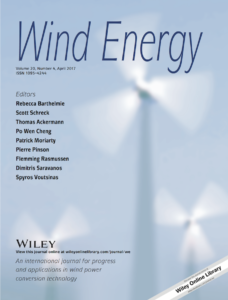
Data are missing again -- Reconstruction of power generation data using k-Nearest Neighbors and spectral graph theory
The risk of missing data and subsequent incomplete data records at wind farms increases with the number of turbines and sensors. We propose here an imputation method that blends data-driven concepts with expert knowledge, by using the geometry of the wind farm in order to provide better estimates when performing nearest-neighbour imputation. Our method relies on learning Laplacian eigenmaps out of the graph of the wind farm through spectral graph theory. These learned representations can be based on the wind farm layout only, or additionally account for information provided by collected data. The related weighted graph is allowed to change with time and can be tracked in an online fashion. Application to the Westermost Rough offshore wind farm shows significant improvement over approaches that do not account for the wind farm layout information.
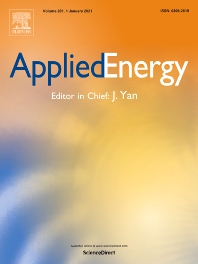
A negotiation-based incentive mechanism for efficient transmission expansion planning considering generation investment equilibrium in deregulated environment
The current Transmission Expansion Planning (TEP) incentive mechanisms are inadequate. They either fail to ensure revenue sufficiency or achieve socially optimal investment. The non-negligible coordination between TEP and Generation Expansion Planning (GEP) in the deregulated environment introduces more computational challenges to the TEP problem. This paper proposes a novel negotiation mechanism that enables Generation Companies (GenCos) and Load-Serving-Entities (LSEs) to negotiate TEP strategies with Transmission Companies (TransCo) directly. The negotiation process is modeled based on the Nash Bargaining theory. We explore the intertwined relationship between TEP and GEP through a bi-level, single-leader multi follower model. We transform the upper-level problem for better tractability and introduce a modified Proximal-Message-Passing (PMP) decentralized algorithm to achieve generation investment equilibrium at the lower level. We then utilize an iterative solving approach to coordinate the two levels. The feasibility and efficiency of this mechanism and methodologies are demonstrated using an IEEE 24-bus test system. The numerical results verify that our mechanism ensures revenue sufficiency and achieves socially optimal TEP strategies comparable to state-of-the-art mechanisms. Additionally, our mechanism maintains transmission network user privacy, aligns the benefits of TransCo with those of transmission network users, and ensures a fair allocation of TEP costs and risks. The proactive participation of market players enabled by the negotiation mechanism can promote the transformation towards new market systems by mitigating the stranded cost issue. Moreover, our decentralized algorithm effectively addresses the non-cooperative nature of GEP, and the computational efficiency analysis justifies the model’s scalability and practicality.
